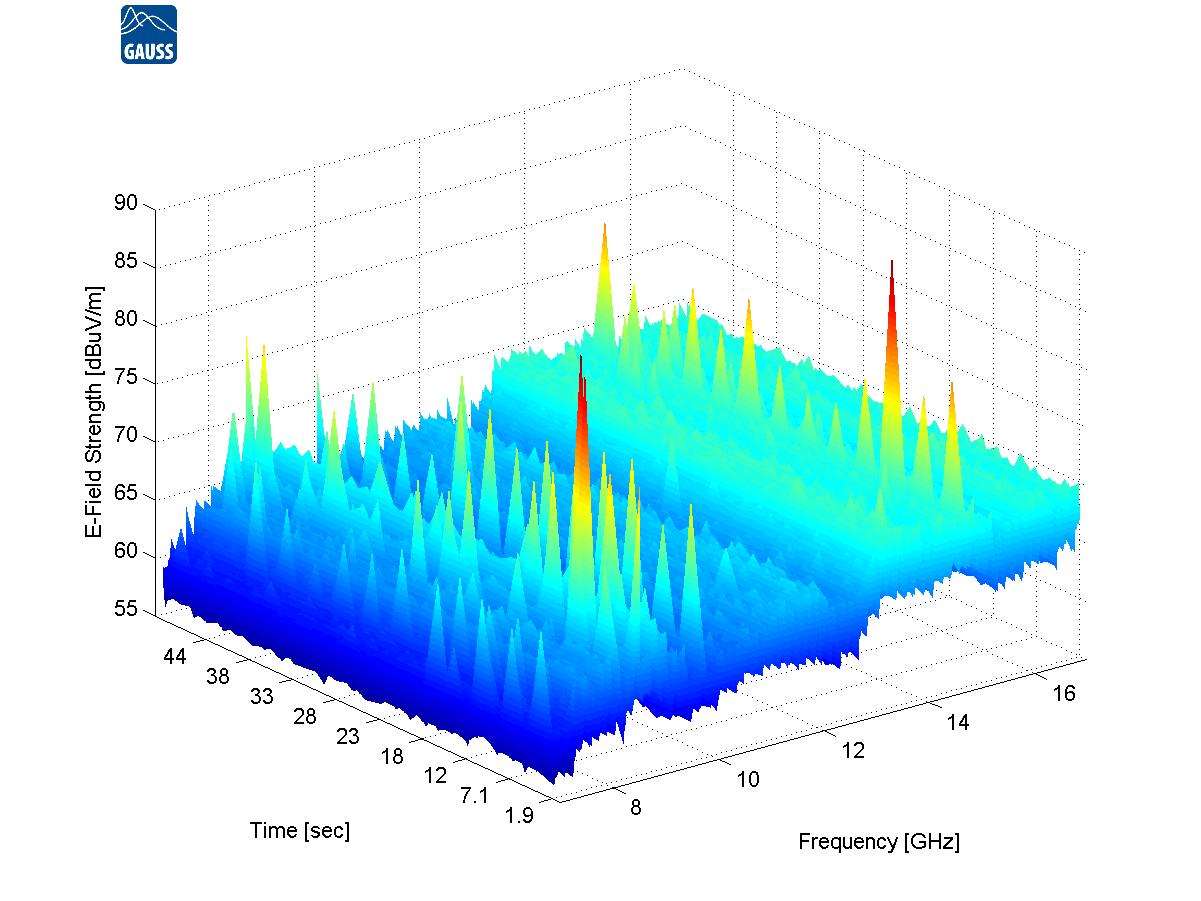The world’s fastest EMI receivers – the TDEMI eXtreme series (TDEMI X) of GAUSS INSTRUMENTS covering the frequency range from DC – 40 GHz and providing unique features as 645 MHz CISPR compliant real-time bandwidth, Multi-GHz Real-time Scanning and the lowest displayed average noise level at 40 GHz can now be equipped with an additional ultra-low noise pre-amplifier for the frequency range 30 MHz – 1 GHz. This novel pre-amp provides lowest noise figure and highest dynamic range - both at the same time. High linearity and lowest displayed inherent noise is achieved by a patented technology using pre-amps with low noise figure, pre-selectors and a special circuit monitoring the linearity reserve of the pre-amp.

The achieved displayed average noise level with an IF bandwidth of 120 kHz is about -15 dBμV over the entire frequency range up to 1 GHz, as Fig.1 shows. In comparison to all other solutions available on the market an improvement of the noisefloor of 5 to 10 dB has been achieved. A further advantage is the possibility to scan within about 3 - 4 seconds with Quasi-Peak, CISPR-Average simultaneously over the complete frequency range. Thus, the TDEMI X receiver series combines the absolutely highest measurement speed with the lowest noisefloor on the market. For measurements according to CISPR or FCC Standards the highest sensitivity on the market is provided by the TDEMI X receivers. This outstanding performance is available in all operation modes, the ultra-fast receiver mode which measures segments of 325 MHz at the same time as well as in the real-time Spectrogram Mode with a 645 MHz real-time bandwidth as well as in the traditional mode performing a stepped scan.
Using a TDEMI X receiver equipped with the option ULNA-UG1G also avoids the need of an additional external pre-amp, reducing the measurement uncertainty and thus improving the accuracy of the results. Also the current costs as well as calibration costs can be further decreased and the throughput of your anechoic chamber can be further improved and optimized.
The Automation Software Suite EMI64k fully supports all the vast number of advantages and features of the TDEMI X making your EMC testing the fastest, highly reliable, and easy just like a walk-over. In order to improve the reliability and to optimize your overall testing times the measurements can be carried out at all frequencies with the CISPR Quasi-Peak detector over all positions to get a full characterization in quasi-peak of your equipment under test for the very first time. Since the noisefloor does not contain any inherent spurs, as shown in Fig. 1, the TDEMI X equipped with the option ULNA-UG1G is the perfect tool for measurements according CISPR 25 as well as all OEM standards. The TDEMI X is the first CISPR compliant receiver showing a DANL of -171 dBm/Hz for the frequency range from 30 MHz – 1 GHz.
The TDEMI X product series has already defined a new benchmark regarding noise level at 40 GHz and in the frequency range down to DC. With the new option ULNA-UG1G available now, the TDEMI X now also sets the new benchmark regarding the sensitivity with a DANL of -171 dBm/Hz in the very important frequency range from 30 MHz – 1 GHz for testing according to FCC and CISPR standards. The combination of pre-selection, ultra-low noise amplifiers and a patented circuitry monitoring the linearity reserve of the pre-amp is the key to provide the lowest DANL together with the highest linearity and fastest measurement speed on the market.

The TDEMI X is applied for EMC testing according to FCC, CISPR, MIL 461, automotive as well as avionic standards. The measurement of spurious emissions according to ETSI Standards, e.g. of Wifi equipment, can be performed without any additional preamplifier or external pre-selector. An example of the emission measurements of the spurious emissions of a microwave oven for the frequency range from 6 GHz to 17 GHz is shown in Fig. 2.